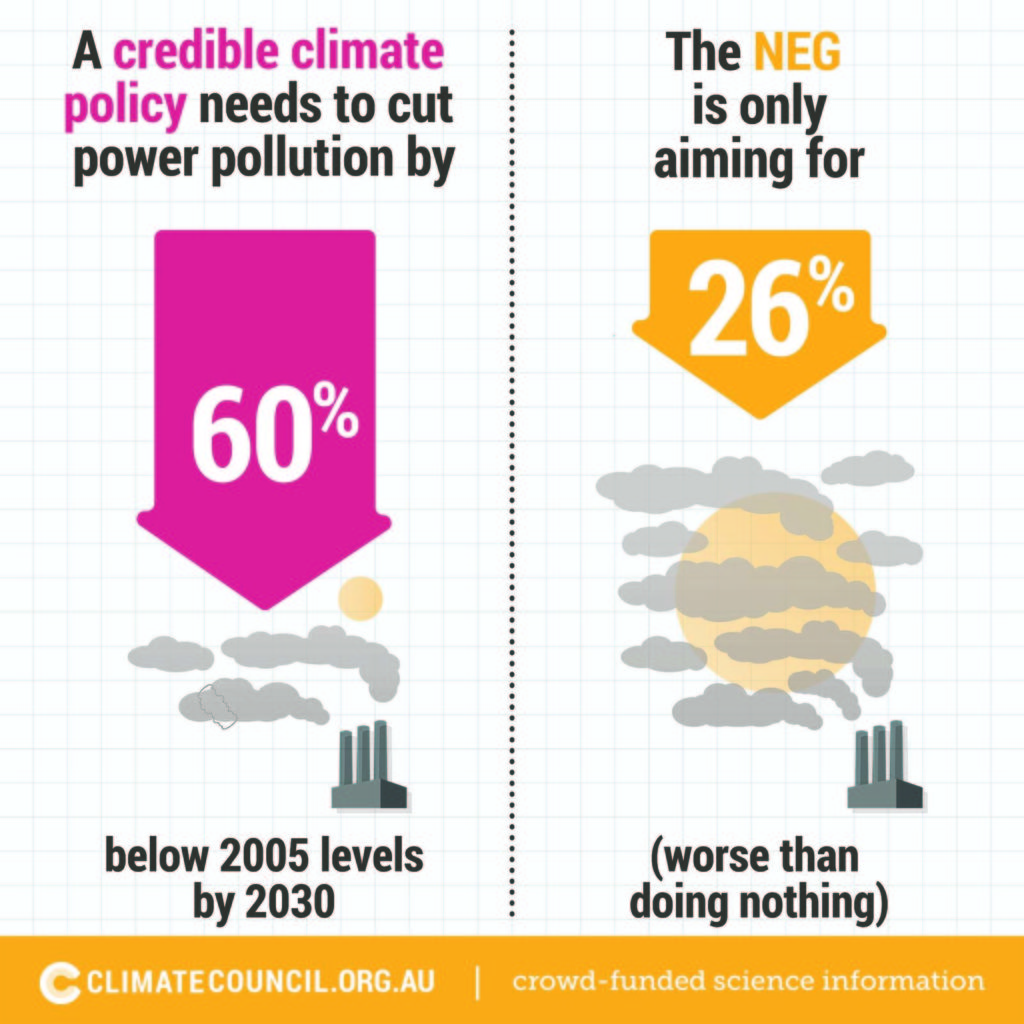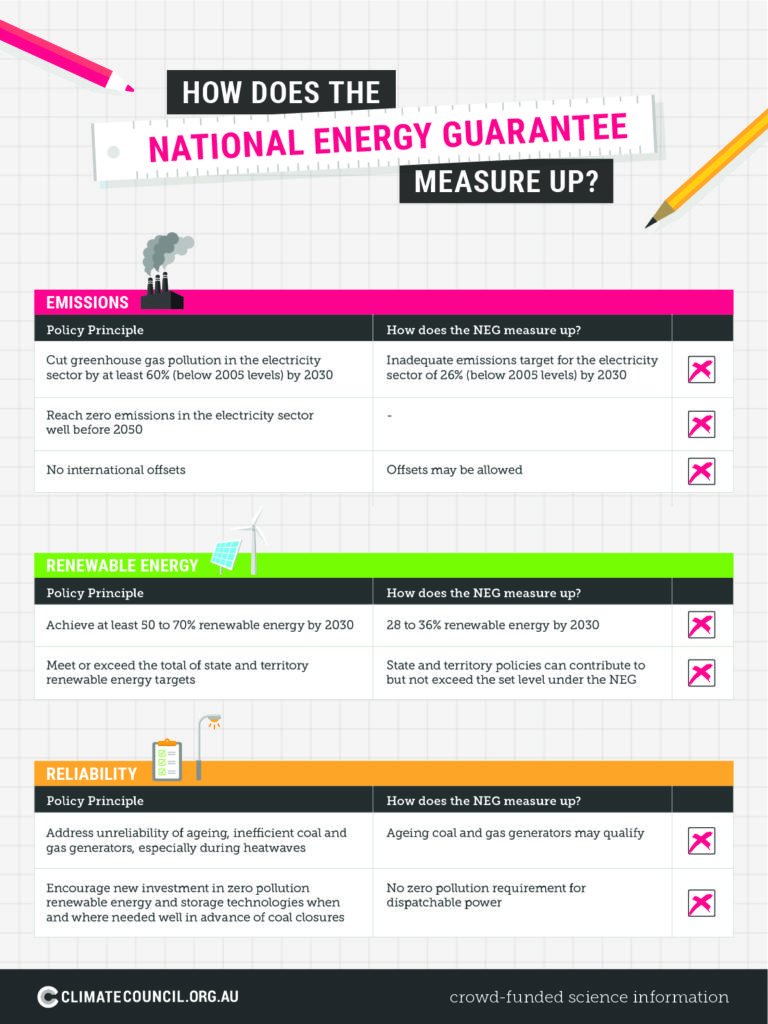In response to the draft detailed design of the proposed National Energy Guarantee (NEG) in June, the Federal Government received more than 60 submissions from a broad range of stakeholders from the energy, business, agriculture, environment and community sectors, each providing feedback.
The Climate Council’s submission can be found here.
Among the submissions, many expressed serious concerns over the proposed emissions reduction target under the planned NEG. The NEG’s electricity emissions target of 26% below 2005 levels by 2030 is woefully inadequate and will mean Australia will fail to effectively tackle the urgent threat of climate change. Furthermore, the NEG lacks any emissions reduction targets beyond 2030, and provides no credible pathway to reaching zero emissions in the electricity sector well before 2050.
As many critics of the NEG have rightly noted, a reduction of 26% requires other sectors of the economy such as transport and agriculture to significantly reduce greenhouse gas pollution levels. Yet, without any viable pathways for many of these sectors to significantly reduce pollution by 2030, Australia will likely fail to meet the Paris Agreement unless the emissions reduction target for the electricity sector increases to at least 60% by 2030.
The Climate Council has analysed the impact that a 26% emissions reduction target for electricity would have on other sectors here.

A broad range of stakeholders share the Climate Council’s concerns about the emissions target, including Origin Energy, the Australian Council of Social Service (ACOSS), ACCIONA, the Australian Academy of Technology and Engineering (ATSE), Energy Developments, Infigen, Enel Green Power and the Australian Council of Trade Unions.
Energy company Origin called for “more ambitious targets” and longer term targets extending beyond 2030, placing Australia on track to reach its goal of zero emissions by 2050 and also sending a clear signal to investors.
Similarly, the ATSE raised concerns over the policy’s effect on investment, stating that “The electricity sector makes investments that have long pay back periods and life spans, and the emissions guarantee requires a long term trajectory to allow the sector to plan for the future”.
This issue was also emphasised by the Property Council, that recommended emissions reductions be set out to 2050 to allow for “increased ambition and faster decarbonisation”. In addition, the Property Council commented that the building sector’s commitment to net zero emissions is strongly dependent on a clean electricity grid, stating that the electricity sector “provides pathways for other sectors to reduce emissions, including the built environment and transport”.
Yet, the Federal Government’s NEG implies no plan beyond 2030 in achieving net zero emissions, nor has the Federal Government provided any insight on how other sectors can achieve their 26% share of emission reductions. As a result, the current proposed NEG not only increases uncertainty to investors, but raises the question: how will the remainder of Australia’s emission reductions be allocated to other sectors of the economy?
Similarly, renewable energy company, Infigen submitted that “the government’s proposed approach risks locking out some of the lowest emissions abatement options to meet the overall national target,” a point that has been echoed by several other key stakeholders such as the Investor Group on Climate Change, the National Farmers Federation, and Tilt Renewables.
Identifying that the cost of renewable energy generation and storage has now fallen to the extent that these technologies currently offer the most cost effective method to reduce Australia’s emissions in the electricity sector, reducing the emissions reduction burden on the broader economy. In addition, the National Farmers Federation voiced their support to ramp up the NEG’s emissions reduction target expressing that “given the current trajectory of the electricity sector, opportunities for further emission reduction are available”.
These stakeholder submissions were consistent with concerns raised during the NEG’s draft design phase.

The woefully inadequate emissions reduction target proposed under the NEG not only represents a failure to effectively address the urgent threat of climate change, but also carries with it the potential to produce catastrophic spillover effects for the broader economy and environment.
In fact, the NEG does not have broad-scale support from stakeholders, with 35 out of 65 (54%) submissions raising concerns about the policy and highlighting the capacity of the electricity sector to reduce emissions by more than 26%.
Ultimately, the Federal Government must acknowledge the electricity sector’s ability to transition to clean, affordable, reliable renewable energy and cut emissions at a faster rate than other sectors of the economy.